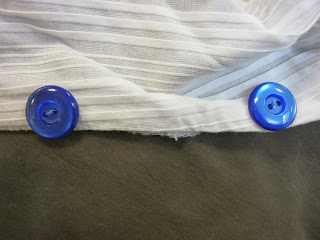Today, I started to develop my lore and mythos for my fictional empire that I call the Pamundur empire. This involved developing the society, the religion, the technology, the architecture, and the fictional history through text so I can get down my initial ideas. In my empire we have a matriarchal society led by women, fought by men with a mostly black and arabic population. There is also a dynasty within this empire of Sultanas, under the name of Pamu, with harems of men to harvest daughters for the eventual throne. It's also worth noting that only the special forces are made of women while the men make the most of the expendable grunts. The religion within this society has two gods named Amalurra (female) and Aitagerra (male) who created man and woman separately to see if they could settle their arguments through a truce race. Unfortunately they just waged wars on each other and in the end the women were proven superior to men, so Aitagerra was banished to the outer realms of Synd (hell), while Amalurra ruled over Earth in the centre realm of Mirakel (heaven). As such, burials are the common ritual while open air cremations and burnings are only saved for those who betray their empire and religion.
Their are a total of six Sultanas during the age of the Pamundur empire, all with varying personalities and achievements. The basic history starts with Chekia tribe who were led by the first Sultana named Umut Pamu started taking over other tribe territories in the Bicamerkezi Isles in the Arabian sea. After taking over 3 territories, she was succeeded by her daughter Faithiyya who conquered all of the other occupied areas of the isles during her short reign of 33 years and was marked as a legend in history as one of the most successful military leaders and rulers of all time. Her successor, Yeter, marked a time of social change and the time of construction. She also discovers the existence of white inhabitants on the previously thought abandoned region of Fanar, who are failed crusaders who mastered early flight technology due to the highly treacherous mountain region. After a brutal attack that left the Fanarians damaged and desperate, Sultana Ritsika rose to power and pushed a religious agenda that caused a lot of controversy over the previously accepting empire. After she ordered a brutal massacre, she was assassinated by a unknown assailant who was rumored to be a bitter Fanarian. After a ten year period of relative peace reigned by Ritsika's brother and the female council, Kali the Grim rose to power with a vicious agenda against all Fanarians. The Fanarians abandoned their homeland, on their newly invented hot air balloons, to live as travellers but were oppressed by Kali's racist empire. The new Sultana Adiya rose after Kali was deemed unfit for rule for massacring a random Fanarian settlement, with a new modern agenda to takeover more land. She ordered a bulk of new technology to be developed from stolen schematics from both the outside world and the Fanarians to help mobilize her country into a fit state for modern conquest. It failed however as a Fanarian rebellion was rising in power and the surrounding countries started to push on them. Eventually she was killed by the Fanarian rebel leader and, after a failed conspiracy by the remaining council members to obtain rule, the empire was disbanded.







































